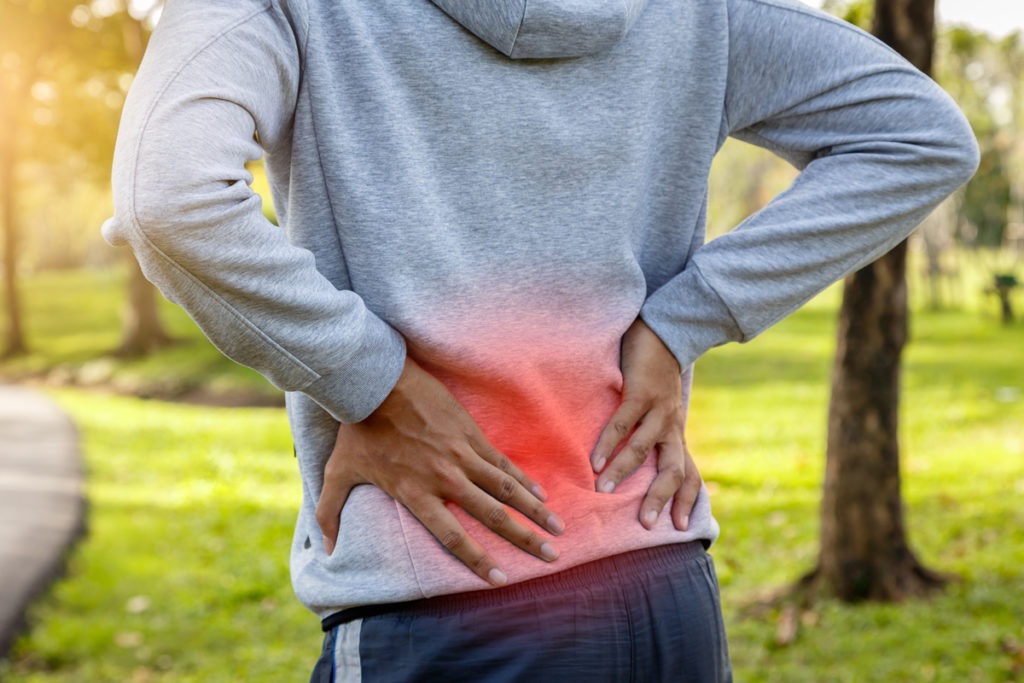Hip pain can be treated through several methods ranging from surgical to non-surgical. If you’re suffering from pain that limits your ability to move, it’s time to get help now.
The hip is called a ball-and-socket joint because the round ball-shaped head of the thighbone (femur) moves inside the cup-shaped hollow socket (acetabulum) of the pelvis. These bones are covered by cartilage, a layer of strong tissue that cushions the bones and allows smooth, easy movement of the joint.
Degenerative joint disease (also known as DJD) can cause a loss of cartilage, resulting in bone-on-bone contact that may result in pain, swelling and stiffness.

Have questions? Schedule an appointment today! (801) 355-6468
The risk of developing symptomatic DJD is influenced by multiple factors such as age, gender and inherited traits that can affect the shape and stability of your joints. Other factors can include a previous hip injury, repetitive strain on the hip, improper joint alignment, being overweight and/or sports-generated stress placed on the hip joint.
There are different types of DJD that may cause hip pain. A hip doctor, or orthopedic surgeon may diagnose:
If you have one or more of the following symptoms, you may be a candidate for MAKOplasty:
Learn more about total hip replacement, Click here.
Patients who have DJD may benefit from total hip replacement, also referred to as total hip arthroplasty. This is a surgical procedure in which the arthritic hip joint is replaced by implants, which include:
In Utah, hip replacement surgeon Dr. Jeremy McCandless at Hofmann Arthritis Institute explains, “With so many treatment options available to you, it is important to understand the differences in the surgical procedure itself. In the past with traditional hip replacement surgery, getting the right fit was just an educated guessing game for surgeons. Now with MAKOplasty, we are able to get new hip replacements to fit just right.”
Although the root cause of osteoarthritis is unknown, the risk of developing symptomatic Osteoarthritis is influenced by multiple factors such as age, gender and inherited traits that can affect the shape and stability of your joints.
Other factors can include:
Symptoms of osteoarthritis of the knee include:
Your physician will begin by reviewing your medical history and symptoms. He or she will observe the natural movement of your knee, evaluate your knee and ankle joint alignment, and check your reflexes, muscle strength, range of motion and ligament stability in the affected knee. Your physician may order X-rays to determine how much joint or bone damage has been done, how much cartilage has been lost and if there are bone spurs present. Additional medical imaging tests such as computed tomography (CT) or magnetic resonance imaging (MRI) may be ordered to determine exactly where the damage is and its extent. Your physician may also order blood tests to rule out other causes of symptoms, or order a joint aspiration which involves drawing fluid from the joint through a needle and examining the fluid under a microscope.
Whether your osteoarthritis is mild or severe, your physician will most likely recommend certain lifestyle changes to reduce stress on your knee joints. Additional disease and pain management strategies may include: physical therapy, steroid injections, over-the-counter pain medications such as acetaminophen, nonsteroidal anti-inflammatory drugs (NSAIDs) or topical pain-relieving creams.
If your symptoms aren’t responding to non-surgical solutions, or your pain can no longer be controlled by medication you could be a candidate for joint replacement surgery.
The most common surgical knee intervention performed for osteoarthritis is a total knee replacement. During this procedure, the diseased bone is removed and resurfaced or replaced with an artificial implant. This treatment option is usually offered to patients with advanced osteoarthritis of the knee.
Total knee replacement is not always optimal for patients with early to mid-stage osteoarthritis in just one or two compartments of the knee. For patients with partial OA of the knee, MAKOplasty® Partial Knee Resurfacing may be the more appropriate solution.
Copyright © 2021 Hofmann Arthritis Institute. All Rights Reserved | Sitemap | No Suprise Act | Site Powered by FUEL Marketing